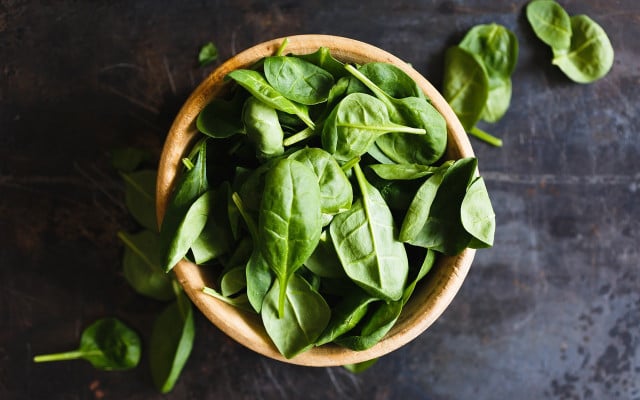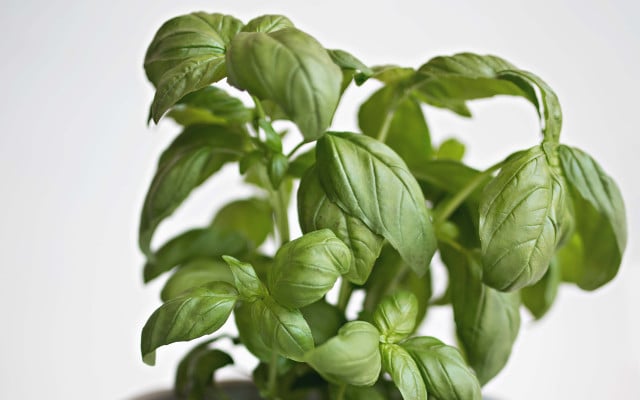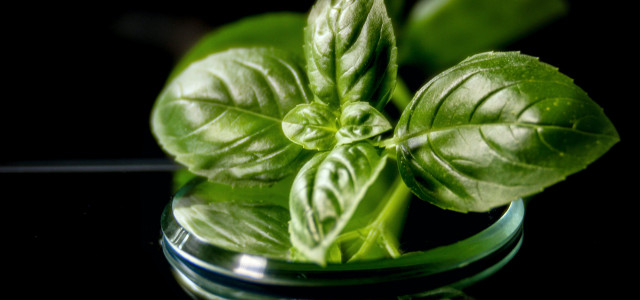We’ll show you how to dry basil so you can keep your herb supply fully stocked for months to come. Drying basil leaves is incredibly easy and will help keep your herbs fresh the whole year round.
Basil is an indispensable ingredient when it comes to Italian cuisine. Pizza made from scratch, pasta or homemade pesto simply can’t go without it. Growing basil yourself is surprisingly easy and makes for a great start to your own kitchen herb garden. With the right technique, basil and other store-bought herbs can stay fresh for months.
Drying basil and other herbs is helpful for a number of reason. For one, growing basil and other annual herbs throughout the winter can prove rather difficult. Plus, anybody without a garden or balcony doesn’t always have a steady supply of fresh herbs at hand. Once it’s time to preserve some for later, you can proceed by either using the herbs up immediately, drying or freezing basil.
As with other herbs, you can dry basil in the oven, in an herb dryer or food dehydrator, or simply by air drying. We’ll show you how to dry basil at home for later use.
How to Air Dry Basil

If you’re intent on drying basil quickly, the oven method is the way to go. However, it’s much more energy-efficient to simply leave the plant out to air dry. Here’s how to air dry basil:
- Cut the basil leaves from the stem with scissors. Leave as much of the stem as possible so that you can bundle the leaves better later. It’s also best to cut the leaves just before flowering, as this is the point at which they are most aromatic.
- Tie the individual leaves together with a twist-tie or string and hang them up on a hook in a well ventilated and somewhat sunny location to dry.
- After about two weeks, your basil leaves will be completely dried. The time may differ depending on the exact location. You’ll know they’re dry enough when you can simply crumble them in your fingers.
- Now you can store the dried leaves in a resealable glass or similar container.
How to Dry Basil in the Oven
If you don’t have the time to air-dry your herbs, you can use another method. Here’s how to dry basil in the oven: Simply spread your fresh basil leaves evenly on a baking tray and bake at the lowest temperature possible for about 20 minutes. Leave the baking tray in the closed oven overnight to ensure that the basil leaves are completely dry. Once finished, place your dried herbs into a suitable container for storage.
Note: We recommended you use this method only if absolutely necessary due to the drastically higher amount of energy required compared to air dying basil. In short: It’s worth it to plan ahead!
The Benefits to Drying Basil Leaves



Like preserving many other types of food, drying basil is the sustainable way to go.
- Particularly pre-potted basil plants bought from the supermarket usually don’t last long. So before they start to shrivel, it makes sense to dry and store the leaves for later use. This way you’ve successfully played a small but important role in preventing unnecessary food waste.
- Basil doesn’t like the cold. This mean if you’re the proud owner of small herb garden on your porch or balcony, drying basil leaves responsibly saves your herbs from becoming winter’s waste. Plus, it will keep your dried herb supply stocked until next spring.
- You’ll almost always find dried spices and herbs in some sort of plastic packaging at the supermarket. Avoid excessive plastic packaging by drying basil at home and enjoy life without plastic.
If Not Dried, Frozen
Learning how to dry basil is just the start. There are endless ways to combat climate change by reducing food waste. Freezing fresh herbs is just the start. Check out Utopia’s own guides on storing food like a pro in the freezer:
- How to Freeze Bananas: Tips and Recipe Ideas
- How To Freeze Strawberries Without Losing Flavor
- How to Freeze Spinach: Preserving Freshness
- How to Freeze Avocados: Halved or Puréed
However, not all foods go great in the freezer. In order to avoid wasted electricity and prevent food waste, stay informed on which foods aren’t freezer-friendly. Utopia’s guide on foods that don’t belong in the freezer will help you store foods sustainably.
This article was translated from German to English by Evan Binford. You can view the original here: Basilikum trocknen: So hast du länger was davon
** Links to retailers marked with ** or underlined orange are partially partner links: If you buy here, you actively support Utopia.org, because we will receive a small part of the sales proceeds. More info.Do you like this post?






